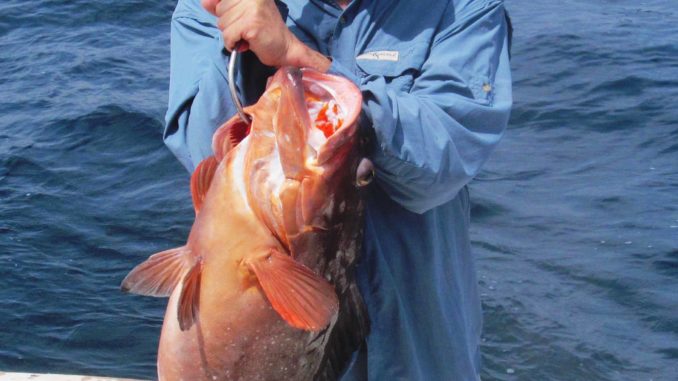
Expect a tasty mixed bag when you head offshore to bottom-fish out of Southport this month.
The Yeah Right swung into position on the anchor rope, and the screen on the fish finder lit up with a mound of fish just above the small ledge. Smiling, Capt. Butch Foster of Southport gave the command to start fishing. His son and mate, Chris Foster, had already passed out bottom-fishing outfits and put chunks of squid and fish on the hooks, and it was only a moment before baits headed for the bottom 100 feet below.
The Yeah Right was over a natural rock outcropping about 10 miles southwest of Frying Pan Tower, and the fish were hungry. The 16-ounce sinkers had barely thumped the bottom when the rat-a-tat-tat bites of the first bait thieves began.
Suddenly, Ben Kee froze as a thump resonated up his line. When he felt it again, he was ready and swept the rod upwards in an arc. The hook locked into the fish’s jaw, and the fight began. It took a few minutes, but Kee won the tug-of-war and swung a very nice gray grunt over the side.
Chris Foster popped it off the hook,slid it into the fish box and grabbed a couple of pieces of bait to reload Kee’s hooks. By the time he swung the line back across the gunwale, another fisherman was swinging a nice black sea bass over the transom. The action continued at this pace for a while, and with six fishermen, Foster stayed busy.
“That big grunt Ben just caught doesn’t get the credit it deserves,” Butch Foster said. “It is a fine-eating fish, but isn’t a grouper or a snapper, so many fishermen consider them a nuisance. We consider offshore bottom-fishing to be different from grouper fishing, and so do the great majority of our clients. We have a few offshore trips where the fishermen only want to catch grouper and snapper, but most of our fishermen want to catch a bunch of fish to take home and eat. We concentrate first on catching a bunch of grunts, porgys and other mixed bottomfish, then look for grouper and snapper to finish their limits, and they are happy. However, the species mix on good bottom, and many times we catch grouper and snapper feeding with the others.
“Usually there will be grouper around where these big, gray grunts are,” he said. “If we are catching a lot of grunts, we’ll start adding cigars minnows on one hook to entice the grouper to bite.”
Foster’s fishermen were using a modified chicken rig that works better with the circle hooks that are now required when fishing the bottom in federal waters, 3 to 200 miles offshore. The shorter drops improve the hookup ratio, and circle hooks work by pulling into the corner of a fish’s mouth as it turns away; they usually set themselves. Jerking to set the hook really doesn’t help, but it is a part of fishing many fishermen can’t let go. Experts say sweeping the rod to the side helps position circle hooks better.
Foster experimented with circle hooks before they were required and has grown to like them. Their ability to set themselves actually works in favor of youngsters and other fishermen who don’t always pay close attention.
After catching a bunch of the bottomfish and a pair of almaco jacks, the action slowed. Foster slowly pulled in some anchor line and let the Yeah Right drift slowly across the rock until he saw another concentration of fish on the fish finder.
“This is a good mark of fish. We need to see what’s here,” said Foster, who anchored once, then repositioned the boat until it was positioned correctly.
The spot immediately proved worthy of the few extra minutes it took to position over it. A grouper and a large vermilion snapper were caught on the first drop, followed by several other snapper and some large black sea bass. The action continued almost non-stop for 30 minutes or so.
Whenever the action slowed, Foster moved the Yeah Right to different rocks and areas of hardbottom, most of which produced a variety of fish. Around mid-day, several of the fishermen were taking a lunch break, when Butch Foster dropped a line over. One of the fish he caught was a spotted goatfish; they hadn’t seen one before — they’re typically found in tropical waters farther south — so they took several photographs before unhooking and releasing it. . The Fosters hadn’t seen one before, so they took several pictures before unhooking and releasing it.
While being reeled up from the deep, many fish regurgitate, and there is a little blood and slime in the water that sometimes attracts a variety of fish, including barracudas, sharks, king mackerel or dolphin. Two tiger sharks and a leopard shark got the fishermen’s attention, but the two cobia swimming with the tiger shark really got the Fosters’ attention.
The fishermen asked about catching one of the sharks, and Chris foster brought out a heavy outfit rigged with a steel leader and a large hook onto which he threaded a large grunt. He lowered it over the side, and after 15 minutes, one picked up the bait but didn’t catch the point of the hook. The second shark, a leopard shark wasn’t as lucky, and for more than 30 minutes, the fishermen took turns wearing it down. On one pass past the boat, Chris Foster lobbed a cigar minnow to a cobia that was following it and hooked up. It was subdued after a several runs and had been in the fish box for a while before the bigger shark finally tired.
Once in the boat, Chris Foster set about removing its internal organs to preserve the flavor, showed several bags of ice into its belly, the wrapped it in a tarp to cool it down. The shark stretched from side to said across the boat’s transom.
With 30 minutes of fishing time left, two more tiger sharks showed up, with another cobia trailing one. Chris Foster quickly made and baited another shark rig and tossed the bait to the shark that was being shadowed by the cobia. It gulped the bait down immediately, and the fishermen took turns trying to wear down the big tiger shark. Twice, baits were pitched to cobia when the shark passed close to the boat, but after the cobia sucked the bait down, it came unhooked just out of gaff range.
When the shark finally tired and was led past the boat, Chris Foster grabbed a knife, reached as close to the fish as he dared and cut the line.
This tiger shark was a little larger than the leopard shark and took a toll on the fishermen. Of course, they already had a 150-quart cooler full of cobia, jacks, grouper, snapper, grunts, porgies and black sea bass. With several hours of fish-cleaning ahead, no one complained when Butch Foster announced it was time to head it. The Yeah Right was barely on plane before the first snores of tired fishermen were heard.
DESTINATION INFORMATION
HOW TO GET THERE/WHEN TO GO — Southport, in Brunswick County, is a couple of miles upstream from the mouth of the Cape Fear River at the coastal terminus of NC 87, NC 133 and NC 211, which cross most of North Carolina’s major highways. A public ramp is on Fish Factory Road off NC 133 between Southport and Oak Island. A fee ramp is located at Southport Marina. Offshore bottom-fishing is pretty good year-round, but September is an especially good month as the water begins to cool and triggers more active feeding, plus, most bottom species can be legally kept.
TACKLE/BAITS — Most fishermen use conventional rods and reels. The rod must have a soft-enough tip to feel subtle strikes and enough backbone to lift stubborn species like grouper. Rods from 5 1/2 to 6 1/2 feet in the 30- to 80-pound class are popular choices. Reels must have adequate line capacity and a heavy duty drag system; 4/0 to 6/0 sizes are popular, spooled with 100-pound braided line. Standard offshore bottomfishing rigs are the knocker rig and the chicken rig. The knocker rig has a sliding egg sinker between 6 ounces and one pound that can be between the hook and swivel or above the swivel. Chicken rigs can be made with two or three drops off the main line, using three-way swivels or fixed drops. With the chicken rig, the sinker is on the bottom and the hook drops come off the main line above the sinker. Hooks should be Mustad 39960 circle hooks in 10/0. Pieces of squid and cut fish, plus whole cigar minnows are the usual fare.
FISHING INFO/GUIDES — Capt. Butch Foster, Yeah Right Charters, 910-845-2004, www.yeahrightcharters.com; Wildlife Bait and Tackle, 910-457-9903, www.wildlifebaitandtackle.com; Dutchman Creek Bait and Tackle, 910-457-1221, www.dutchmancreekbaitandtackle.com; Island Fishing Center, 910-201-4002. ee also Guides and Charters in Classifieds.
ACCOMMODATIONS — Southport Angler Outfitters, (910-457-7096, www.southportlodging.com; Lois Jane’s Riverview Inn and Riverside Motel, 910-457-6701, www.loisjanes.com; The Inn at River Oaks, 910-457-1100, www.theinnatriveroaks.com; Wingate by Wyndham, 910-454-0086, www.wingatehotels.com; Hampton Inn, 910-454-0016, www.hamptoninn.hilton.com; Comfort Suites, 910-454-7444, www.comfortsuites.com/southport; Southport-Oak Island Chamber of Commerce, 800-457-6964, www.southport-oakisland.com.
MAPS — Capt. Segull’s Nautical Charts, 888-473-4855, www.captainsegullcharts.com; Sealake Fishing Guides, 800-411-0185, www.thegoodspots.com; Maps Unique, 910-458-9923, www.mapsunique.com; Grease Chart, 800-326-3567, www.greasechart.com.

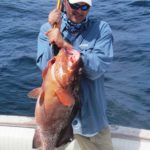
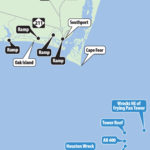
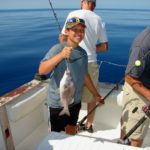
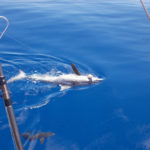
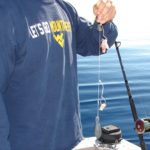




Be the first to comment